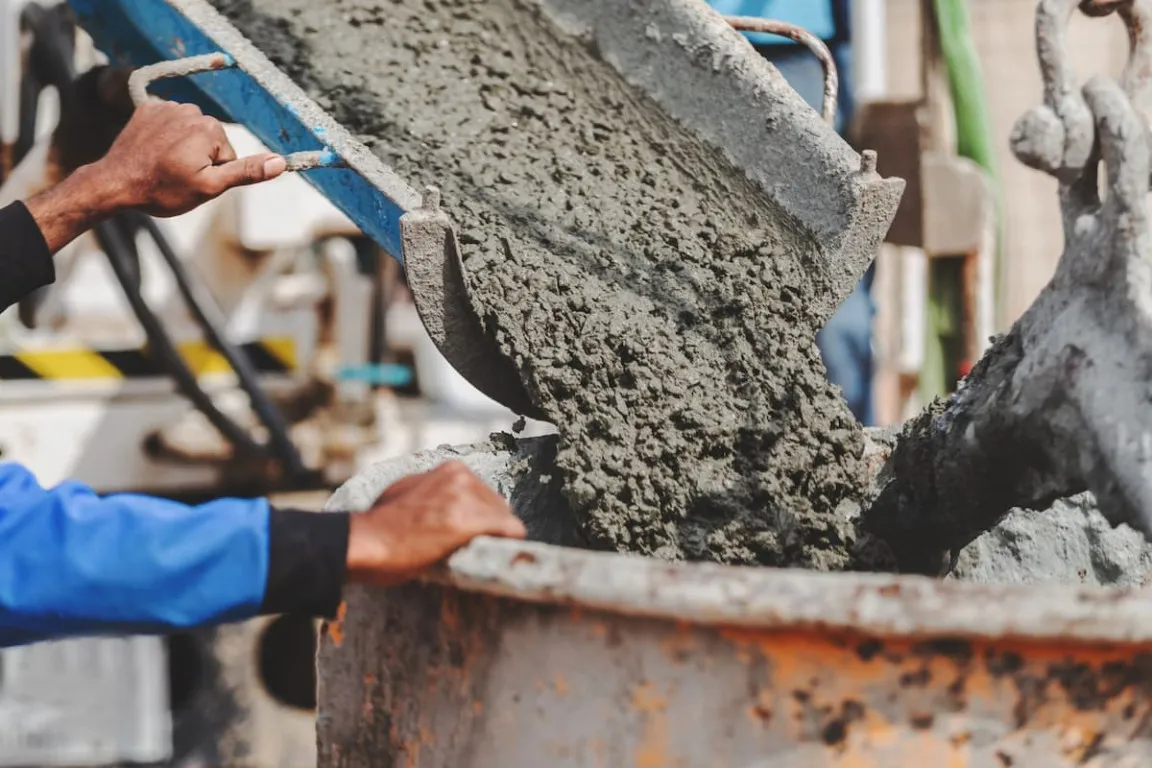Concrete segregation is one of the problems that can significantly reduce the quality of concrete mixes. Although concrete is known as a strong and durable construction material, this condition can cause separation between the aggregate, cement, and mixing water.
If left unchecked, concrete segregation has the potential to compromise the integrity of building structures and lead to serious damage in the future. The concrete surface can become uneven, hollow, and prone to cracking over time.
Whether you mix concrete yourself or rely on professional services, it is essential to understand the causes and methods for preventing segregation from the outset of the process.
Let's take a comprehensive look at what concrete segregation is, the factors that cause it, and how to fix it in this article!
What Is Concrete Segregation?
Concrete segregation is a condition where the components of a concrete mix, such as sand, gravel, crushed stone, and other filling materials, tend to separate and not mix homogeneously.
This condition can cause larger aggregate particles to separate from the cement and water mixture. This segregation phenomenon can be seen when the concrete begins to harden, where the surface becomes uneven and has a honeycomb-like texture.
If left untreated, segregation can cause serious problems, both during the casting process and in the long term, as it will reduce the structural strength and overall quality of the building.
In general, segregation in concrete can occur in several forms, such as separation of coarse aggregate from the mix, separation of water from the cement paste or bleeding, and separation of cement paste from the concrete cast mix.
Causes of Concrete Segregation
Segregation in concrete can occur due to several factors, both from the composition of the mixture and the method of working in the field. The following are common causes.
1. Improper Water Proportion
The use of too much water in a concrete mix makes the mix too thin. This causes lightweight aggregates, such as sand, to rise to the surface, while gravel or heavier aggregates will settle.
On the contrary, too little water can also cause the mixture to be inhomogeneous. This inaccurate proportion of water also reduces the adhesion of cement to the aggregates, leading to a reduction in the strength of the concrete.
Read also: Precast Concrete: Definition, Functions, and Types
2. Poor Material Quality and Mix Composition
The use of low-quality aggregates or under-composition, such as too much coarse aggregate compared to fine aggregate, can lead to segregation. Uneven initial mixing can also cause the coarse and fine particles not to be perfectly distributed, resulting in segregation of the concrete even before it is poured.
3. Excessive Mixing
Concrete segregation can also happen due to excessive mixing. While the mixing process is important, if done for too long or excessively, especially in dilute mixes, heavy particles will tend to settle to the bottom.
4. Incorrect Pouring and Distribution Techniques
Pouring concrete from excessive heights or distributing the mix too far from the casting location can cause large aggregates to separate and settle faster. This often happens when concrete is poured directly without the help of gutters or pipes that are supposed to help maintain the consistency of the mix.
5. Improper Use of Vibrating Tools
Improper use of vibrating tools can cause concrete segregation. Prolonged use of a concrete vibrator can cause segregation of the material as the heavier particles will tend to drop to the bottom.
Concrete Segregation Risks
Concrete segregation can cause serious problems that affect the quality and durability of buildings. The main risks of concrete segregation are as follows:
1. Decrease in Structural Strength
Inhomogeneous concrete has a weak adhesion that drastically decreases its strength, especially in structural elements, such as columns, beams, and slabs.
The uneven mixture makes the cement fail to function optimally as an adhesive between aggregates, so that the structure becomes more fragile. This is especially risky if the concrete serves as the foundation or main support of the building.
Read also: Concrete Rebate: Definitions, Functions, and Advantages
2. Reduced Resilience of Concrete
Segregation can create voids around large aggregates that allow water and chemicals to enter. As a result, concrete's resistance to extreme weather, moisture, and corrosive materials decreases. In addition, concrete is also more prone to cracking and surface damage, which increases maintenance and repair costs.
3. Decreased Aesthetic Value
Concrete surfaces that experience segregation generally look uneven, rough, and striped, and can form a honeycomb-like pattern. On visible parts of the building, such as external walls, sidewalks, or patios, this condition is very visually disturbing.
Although it can be repaired, the difference in color and texture is usually still visible, so the result is not as good as the smooth concrete from the beginning.
How to Prevent Concrete Segregation
To maintain the quality of concrete and prevent segregation, several important steps need to be taken. The following are effective ways to avoid it:
- Ensure that the proportions of water, cement, and aggregate are appropriate so that the mix is not too dry or liquid. Improper proportions can reduce adhesion and cause segregation as well as a decrease in concrete strength.
- Use a mechanical concrete mixer to achieve an even and consistent mix. If mixing manually, make sure the mix is completely homogeneous.
- Pour the concrete from a low height using a gutter or tool to prevent the concrete from falling freely into the mold so that heavy particles do not settle to the bottom.
- Stir or vibrate sufficiently after casting to remove air. However, avoid over-stirring as this may cause the coarse aggregate to drop to the bottom and cause segregation.
How to Repair Segregated Concrete
Repair of segregated concrete must be adjusted according to the level of damage to maintain the strength and safety of the structure. Here are some repair methods that can be applied:
- For light segregation on surfaces that do not support heavy loads, use the method of recoating or resurfacing with self-leveling mortar. This process includes cleaning the area, removing loose particles, and filling gaps around large aggregates to level the surface.
- If segregation occurs in critical structural parts, such as foundations or floors that support vehicles, the best solution is to carry out demolition and recasting. This step should be taken with careful planning and consultation with a structural engineer to meet safety standards.
- Ensure the selection of quality materials, appropriate concrete mixture composition, and the use of a concrete mixer to produce a homogeneous and efficient mix from the beginning of the work.
That is a complete explanation regarding concrete segregation, from the definition, causes, to how to avoid it. Segregation that is not handled properly can significantly reduce concrete strength and affect the long-term resilience of the structure.
To reduce the risk of segregation, in addition to proper casting techniques, the selection of materials is also very important. One solution is to use high-quality ready-mixed concrete that has been designed according to the latest technical standards.
Through its subsidiary, Beton Merah Putih, Semen Merah Putih provides Ready Mix Concrete and Precast Concrete products specifically designed for various construction project needs, from housing, multi-storey buildings, to road and bridge infrastructure.
If you want to ensure optimal concrete quality for your project, it wouldn't hurt to consider solutions from Semen Merah Putih. Find the products that suit your needs and contact us for more information!
Read also: Advantages of Concrete Road Casting and Its Construction Process



